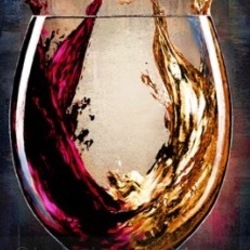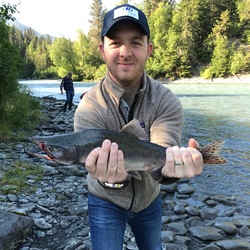Seavey Vineyard
Clos du Val Wine Co.
Napa Valley Cabernet Sauvignon 2013
Popped and poured, no formal notes. This bottle has been stored in my cellar since release. I have always appreciated the restrained expression of Clos du Val however, this was enjoyed after the 2005 “Caravina” and there is a very clear difference in class between the two. The Seavey had a level of energy, sophistication and polish that the CdV just couldn’t match, even though it was 8 years younger. However, there was a subtle charm to it and if enjoyed on its own, would have made more of an impression. The profile was dark, with loads of earth. Structure was firm but in balance with the fruit. Finish was medium. Built for another decade but probably won’t improve.
— 3 years ago
Pine Ridge Vineyards
Rutherford Cabernet Sauvignon 1999
One of two ‘99 vintage Napa cabs I’ve had recently (the other being Seavey) and this was a step or two behind. The fruit is all stewed and muddled...mainly dusty blackberries and old puréed red fruit. There is a distinct cocoa dusted dates note in the middle of this wine and even some old graham cracker. The fruit is even slightly tart on the palate (underripe plum, older currant), though very herbal at the finish. This was slow oxed for quite a few hours by the time I got to it, so it may have faded a bit by then. Regardless, drink up. — 6 years ago

Seavey Vineyard
Estate Bottled Cabernet Sauvignon 2018
Amazing Napa Cab from St Helena made in a very Bordeaux style. Savory nose. Tomato bisque , dried thyme, and pepper. Cedar wood and leather. Medium acid on the palate. With great tannins for structure. Dark raspberry. Wonderfully balanced and savory. 14.5% , will definitely have to get some more. Highly recommended this is my kid of Napa Cab, not another fruit bomb here. — 3 months ago
Tercero
Camp 4 Vineyard Grenache Blanc 2016
Two bottles I opened this evening. I’ve written about the ‘99 Seavey before (thankfully I have 1-2 left!)
My last of three bottles of Tercero Grenache Blanc. Fun wine if you are willing to sit with it and analyze. Very much a thinking style wine, not your typical Grenache Blanc.
Right off the bat (under screw cap) is a whiff of TDN (petrol). Normally that takes me to Alsace or Germany, but the weight here is undeniable Cali with its tropical kiss. In my opinion, Grenache Blanc normally is a bit subdued aromatically with a distinct pistachio/almond note at the finish. This is a viscous and commanding style (salted pineapple) without being flabbby before it channels that pistachio/almond vibe towards the end. Kind of a bigger version of Paso clariette Blanche. Fun to analyze. Drink up. — 2 years ago

Seavey Vineyard
Founder's Reserve Napa Valley Cabernet Sauvignon 2014
Seavey Vineyard
Mimi's Napa Valley Cabernet Sauvignon Merlot Rosé 2023
Unscrewed and poured; enjoyed over a couple hour period. The 2023 “Mimi’s Rosé” pours the cutest pink color with medium viscosity. I should note that this is the lightest color I can recall since the first vintage in On the nose, the wine is developing with notes of soft strawberry, raspberry, red plum, kiwi and minerals. On the palate, the wine is dry with low tannin and medium+ acid. Confirming the notes from the nose. The finish is medium with lovely minerals and acid. I’ve tried every vintage of Mimi’s Rosé since 2019 and I’ve got to say this is, by far, my favorite to-date. I’d love more of this. Drink now, outside, during a sunset. — a year ago
Pahlmeyer
Napa Valley Merlot 1996
A lesson in one’s wine evolution. Pahlmeyer was one of the first mailing lists I joined . This was the first case purchase of my life. Told to wait 2-3 years before drinking, I did exactly
that. I opened a few bottles over the years and really disliked it. Probably around 2005 a friend asked if I had some wine to donate to charity. Of course I said here is 5 bottles of Pahlmeyer merlot.
That left 3 bottles that I stashed in storage . Fast forward to 2010 and I opened a bottle for a friend who owned a wine store . The two of us looked at each other like deer in the headlights, we were dumbfounded by how good this was. I drank my remaining bottles and have not had this wine since 2016. Thanks to a generous friend who recently said go to the cellar and you pick out wine for dinner. For my palate along with ‘91 Dominus, ‘91 Seavey ‘91 Togni and ‘95 Insignia the best California wines from the ‘90’s. By the way the lack of tasting experience also had me pooh poo ‘91 Dominus.
On the nose a little bit of funk that quickly blew off. Red fruit and plums on the nose give way to a palate of complex and long lasting fruit surrounded by earth and tannins. The wine’s structure leads me to believe that well stored bottles can bring pleasure over the years to come. I would love to taste this out of magnum. — 5 years ago






Tom Garland
Decant for sediment and pour(decent chunky/fine sediment). A prodigious, still inky dark magenta color. On the nose: Terrific notes of musty candied cherry, pine, tobacco leaf, forest floor, little smoked meat. Taste: silky smooth, balanced, elegant wine with blackberry, cassis, earth, minerals, fig, and a long dark chocolate minty finish. YUM! Aged Seavey never disappoints...should hold for more years of drinking pleasure. — 23 days ago